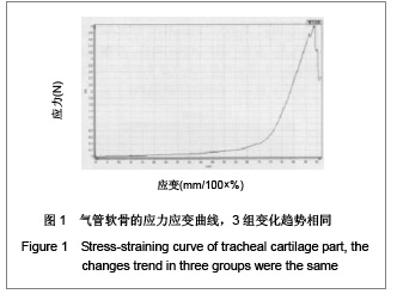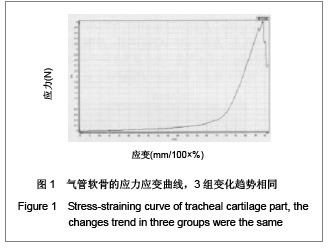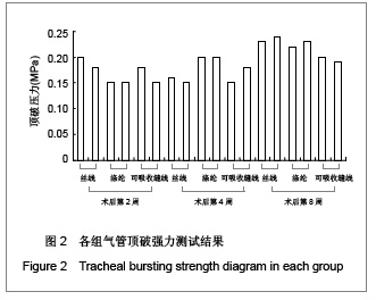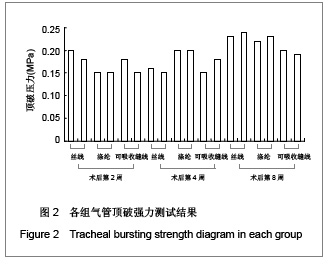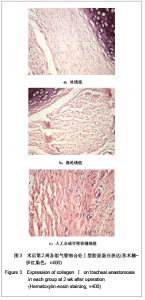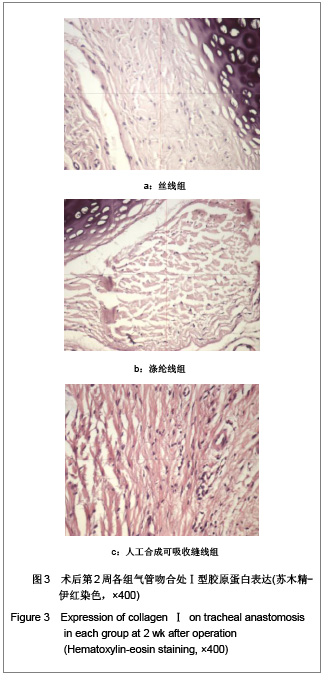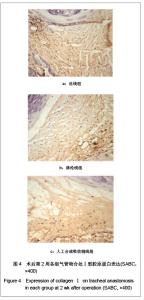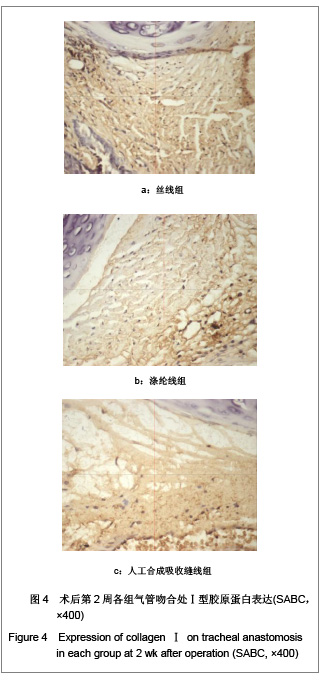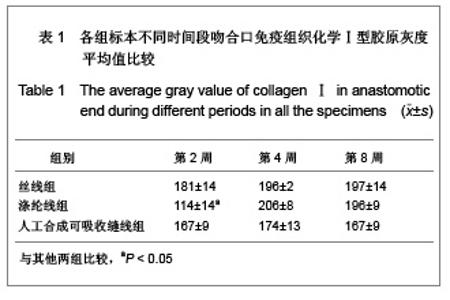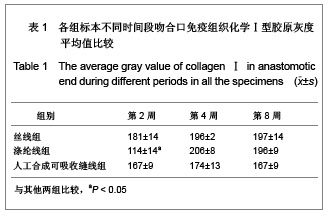| [1] Deng W,Shi H,Pei C. Experimental study on biomechanical properties of porcine trachea.Sheng Wu Yi Xue Gong Cheng Xue Za Zhi.2009;26(5):996-999.[2] He DP, Mo L, You Y, et al. Zhongguo Zuzhi Gongcheng Yanjiu yu Linchuang Kangfu. 2007;11(40):8034-8037. 贺大璞,莫靓,游咏,等.三种缝合材料对兔气管吻合口愈合质量的影响[J].中国组织工程研究与临床康复,2007,11(40):8034- 8037.[3] Chen S,Guo XP,Lu Y P,et al. Zhongguo Zuzhi Gongcheng Yanjiu yu Linchuang Kangfu. 2010;14(11):1907-1910. 陈树,郭喜平,吕雅平,等.人气管软骨的拉伸力学特性[J].中国组织工程研究与临床康复,2010,14(11):1907-1910.[4] Schilt PN,McRae BR,Akkus O,et al.An experimental model to investigate initial tracheal anastomosis strength. Laryngoscope.2010;120(6):1125-1128.[5] Haag J,Baiguera S,Jungebluth P,et al.Biomechanical and angiogenic properties of tissue-engineered rat trachea using genipin cross-linked decellularized tissue.Biomaterials.2011; 33(3):780-789.[6] Shi H,Wang W,Lu D,et al.Cellular biocompatibility and biomechanical properties of N-carboxyethylchitosan/ nanohydroxyapatite composites for tissue-engineered trachea.Artif Cells Blood Substit Immobil Biotechnol. 2012; 40(1-2):120-124.[7] Cheng G,Yu FL.Zhongnan Daxue.2009. 成钢,喻风雷.新型复合人工气管的生物力学实验研究[D].中南大学,2009.[8] Zhang WH,Huo R,Li SB,et al.Zhongguo Meirong Yixue. 2010;19(7):1015-1017. 张文浩,霍然,李尚滨,等.组织工程化犬气管的生物力学研究[J].中国美容医学,2010,19(7):1015-1017.[9] Yan ZY,Ye X.Guowai Yixue:Er Bi Hou Kexue Fence. 2003; 27(5):315. 阎志毓,叶星 .体内实施气管吻合后不同阶段的力学稳定性[J].国外医学:耳鼻咽喉科学分册,2003,27(5):315. [10] Kawaguchia S,Nakamurab T,Shimizu Y,et al.Mechanical properties of artificial tracheas composed of mesh cylinder and a spiral stent.Biomaterials.2001;22(23):3085-3090.[11] Behrend M,Kluge E,Schüttler W,et al.The mechanical stability under load of tracheal anastomoses after various phases in vivo.Laryngoscope.2002;112(2):364-369.[12] Behrend M,Kluge E,Schüttler W,et al.Breaking strength of native and sutured trachea. An experimental study on sheep trachea.Eur Surg Res. 2001;33(4):255-263.[13] Xie C,Liu N,Lin DQ,et al.Shengwu Yixue Gongchengxue Zazhi. 2007;24(1):219-221. 谢驰,刘念,林大全,等.人体皮肤等效材料弹性性能的测试方法研究[J].生物医学工程学杂志,2007,24(1): 219-221.[14] Li Q,Wang YY,Li YL,et al.Chanyeyong Fangzhipin. 2011; 29(6):12-14. 李倩,王云云, 李毓陵,等.机织人工气管的性能分析[J].产业用纺织品,2011,29(6): 12-14.[15] Ye LH,Huang YC,Li GF,et al.Zhongguo Feiai Zazhi. 2009; 12(9):961-964. 叶联华,黄云超, 李高峰,等.三种缝线材料对人肺腺癌细胞A549增殖和细胞周期的影响[J].中国肺癌杂志,2009,12(9): 961-964.[16] Xu WJ,Zhao L.Guoji Fangzhi Daobao. 2007;35(1): 70-73. 徐文建,赵俐.玻璃纤维经编柔性复合材料顶破性能的研究[J].国际纺织导报,2007,35(1): 70-73.[17] Wu ZY,Chen SY,Li YX,et al.Fudan Xuebao:Yixueban. 2011; 38(2):113-116. 吴子英,陈世益,李云霞,等.不同频率牵拉对兔跟腱组织学表现和Ⅰ型、Ⅲ型胶原蛋白表达的影响[J].复旦学报:医学版,2011,38(2): 113-116.[18] Feng WP,Qi YM,TangKY. Beijing Ligong Daxue Xuebao.2010; 30(10):1231-1234,1239. 冯文坡,祁元明,汤克勇. 兔皮Ⅰ型胶原的提取、改性与性能研究[J].北京理工大学学报,2010,30(10):1231-1234,1239.[19] Yang Z.Kunming Yixueyuan.2004. 杨政.成人系膜增生性肾小球肾炎肾小球区I型胶原和IV型胶原定量分析[D].昆明医学院,2004. [20] Leeming Dj,He Y, Veidal S, et al.A novel marker for assessment of liver matrix remodeling: an enzyme-linked immunosorbent assay (ELISA) detecting a MMP generated type I collagen neo-epitope (C1M).Biomarkers. 2011;16(7):616-628. |
